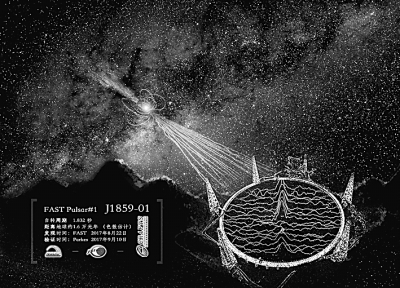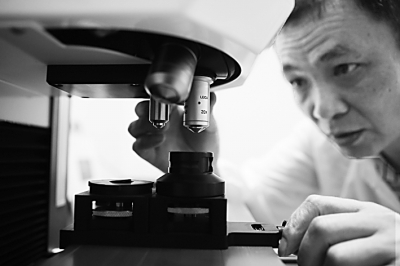Atlas of Scientific Structure 2017: China has risen rapidly in hot frontier scientific research.

China’s new generation ocean-going comprehensive scientific research ship "Science" carries the "Discovery" remote-controlled unmanned submersible to explore Caroline Seamount in the western Pacific Ocean. Xinhua news agency


[Science to the Future]
In the report of the 19th National Congress of the Communist Party of China, General Secretary of the Supreme Leader pointed out: We should aim at the forefront of world science and technology, strengthen basic research, and achieve a major breakthrough in forward-looking basic research and leading original achievements. So, what is the development of science and technology in China? A few days ago, scholars from the Institute of Science and Technology Strategy Consulting of China Academy of Sciences constructed the China Atlas of the scientific structure based on their own Atlas of the Scientific Structure, which revealed the active degree of China in the hot frontier fields that the international scientific and technological circles generally paid attention to, and compared and analyzed the output scale, discipline layout, academic influence, research cooperation and advantageous fields of China and the United States, Germany, Britain, Japan, France and other six countries with the world share of scientific and technological papers in the global hot frontier, and analyzed the development trend of China’s scientific research, and found out its relationship with other scientific and technological fields.
The gap in the frontier scientific research field of world hotspots has narrowed rapidly.
Atlas of Scientific Structure reveals the hot research frontiers that are naturally, objectively, covertly and dynamically formed in scientific research practice, especially through cross-integration, through the co-citation relationship of highly cited papers. By analyzing China’s share of core papers in these frontiers and their changes, we can show China’s position and development in the world’s hot frontier scientific research. It is found that China’s share has expanded rapidly, and the gap with the United States has narrowed rapidly. The overall indicators and some special indicators have surpassed those of Britain, Germany, Japan, France and other traditional scientific and technological powers.
Among all the hot frontier research fields revealed by Atlas of Scientific Structure, China’s share of highly cited papers (called core papers) in these fields was in 2002 — In 2007, it was only the fifth place, and in 2006 — In 2011, it occupied the second place, and from 2006 — 7.53% in 2011 rose to 2010 — 14.2% in 2015, each period has an increase of more than 30%, which greatly exceeds the world share of Germany, Britain, Japan and France. In the same period, the overall share of core papers of traditional science and technology powers generally showed a downward trend, and the share of the United States increased from 2002 to — 49.72% in 2007 has dropped to 2010 — 36.97% during 2015.
Papers that cite the above-mentioned core papers in the follow-up research (called cited papers) reflect the continuous research achievements in these frontier areas, among which the cited papers themselves rank in the top 10%(TOP10%) of cited papers in SCI papers as relatively high-quality papers, reflecting the research strength and leading potential in these frontier areas. China’s share of TOP10% cited papers exceeds that of China’s core papers, and it ranks second in the world, which shows the strong stamina of China.
The coverage and intensity of China’s core papers in all hot frontier fields showed an obvious growth trend, and the coverage of research fields remained fourth in the world for five consecutive periods, with a significant increase from 69.4% to 84.5%. The number of research fields with a high share of core papers in China (more than 12% in this field) has increased from 5.8% to 30.2%, much higher than that in Britain and Germany. Nanotechnology, synthesis and applied chemistry have always been the fastest growing fields in China. China’s research in the fields of mathematics, engineering science and computer has grown rapidly, and many people have been induced to work on algorithms, image processing and system control. In the fields of biology and medicine, China has also shown a growing momentum. However, the research level in China is still uneven, with most core papers distributed in nano-scale, chemistry, condensed matter physics and earth science, while biology and medicine are relatively few.
The coverage and intensity of China’s international co-authorship in the research field show an obvious growth trend, and China’s leading position in international cooperation is increasing year by year, and the proportion of China’s communication authors in international co-authorship papers is increasing year by year, from 2010 to — Close to the United States during 2015, reaching 49.9%. The United States, Germany, Britain, Japan and France showed a downward trend. The number of research fields that China relies entirely on cooperation and has no cooperation at all is gradually decreasing, and the interval distribution of international co-authorship rate is getting closer and closer to that of powerful countries in science and technology. China’s international cooperation in various disciplines is unbalanced, and the international co-authorship rate in the fields of nanotechnology, synthetic and applied chemistry, engineering science and mathematics is low. At the same time, compared with other countries, the growth rate of international co-authorship in these fields is also relatively slow. This may reflect China’s independent advantages in these fields, and may also reflect the need to further stimulate the potential of major innovations in these fields through deepening international cooperation.
The coverage of research fields has been continuously expanded, and the scientific research structure of China has been continuously improved.
The coverage rate of core papers in China has increased from 69.4% to 84.5%, but it still lags behind the United States (100.0%) and Britain (91.0%). The number of research fields with a high share of core papers in China has increased from 5.8% to 30.2%, which is much higher than that in Britain and Germany, but there is still a big gap compared with that in the United States (87.5%), and the share of core papers in one third of hot frontier research fields in China is less than 1%. The coverage of China’s core papers in new research fields has also increased significantly, from 57.1% to 83.1%.
China’s research in various disciplines is still unbalanced, compared with that in developed countries. However, from 2006 — Since 2011, the number of core papers in biology and medicine in China has increased, and the proportion of core papers in corresponding research hotspots has also increased.
Physics: China ranks third in the world in core papers on physics, but its share in particle physics and cosmology is still the lowest among the six countries. In the specific hot frontier fields, China has done well in the fields of iron-based superconductors and copper oxide superconductors, and the dynamics research of complex networks, but there is no core paper in the field of ultrafast magnetodynamics. Except for quantum correlation research, the share of core papers in other research fields in the United States is the highest in the world. Germany’s research in the field of physics is relatively balanced, while Britain’s advantages in particle physics and cosmology are obvious.
Nanotechnology: The share of core papers on nanotechnology in China ranks second in the world, and shows a continuous growth trend. China and the United States have opposite advantages in nanotechnology. Among the top ten research fields in China, China’s core papers account for more than 50%, but it is a weak research field in the United States. On the contrary, the share of core papers in China’s top ten research fields is basically above 40%. The United States has done a lot of research on nano-biology, physical properties of nano-materials, photoelectric materials, information application and theoretical calculation. China has done a lot of research on energy storage, chemical properties of nanomaterials and nano-applications.
Chemistry: China ranks first in the world in the core papers of synthetic and applied chemistry, with the largest share in the fields of preparation of graphite-phase carbonitride compounds and their complexes, supramolecular polymers, alkaline fuel cells, metal-catalyzed organic synthesis reactions, etc. However, the application of synthetic and applied chemistry in biology and medicine in China is still weak. The United States has great advantages over China in the research of catalytic conversion of biomass, paper-based microfluidic devices and cellulose nanomaterials.
Earth Science: China’s share of core papers in earth science ranks second in the world and continues to grow. China has an absolute advantage in the study of cratonization in North China during the Precambrian period, with a high share of core papers in the research field of environmental science, but there are three frontier research fields in ecology without core papers. The United States has a strong advantage in the field of earth science, while Germany and Britain are relatively balanced, covering all research fields.
Biology: The share of core papers in biology in China ranks second in the world, and continues to grow slightly. China has a high share of core papers on protein’s structure and function prediction, identification and function research of long-chain non-coding RNA, but there are no core papers on the relationship between biological rhythm and disease, organ chip and tissue engineering research. The United States has a strong advantage in various hot frontier fields of biology, and Germany and Britain are relatively balanced.
Medicine: China’s share of core medical papers is relatively low, ranking fifth among the six countries. China has a relatively high share of core papers in hot areas such as the relationship between environment and diseases and metabonomics-related research on promoting human health, but there are no core papers in 26 research areas such as the influence of prenatal infection on children’s brain development and behavior, schizophrenia, brain-computer interface and research and application of rehabilitation robots.
Engineering, Mathematics and Computer: China ranks first in the world in core papers in this field, and the research fields with high core papers are artificial neural network theory and its application, hesitant fuzzy set theory and its application in decision-making, image and 3D model retrieval, etc. However, there is no core paper on nanofluids research in China, while core papers have appeared in the United States and France.
Generally speaking, there are 37 research fields in China that rank first in the world in the number of core papers of communication authors. These research fields are mainly distributed in the fields of nanotechnology, synthesis and applied chemistry, engineering science, computer science and mathematics, mainly focusing on batteries, graphene, North China cratonization, controlled drug release, system control and image processing. At the same time, China has not published core papers in 36 research fields, among which 26 research fields are related to medicine, 2 in biology, 3 in ecology, and 1 in nano-biomedicine, computational chemistry and optics. There is still a gap between China and other big scientific and technological countries in the pioneering of core papers in scientific research, which may indicate that China’s innovation leading ability needs to be further improved; At the same time, the similarities and differences in scientific research structure between China and other big countries in science and technology may imply the differences in scientific research layout, innovation focus and innovation ability. These will be further analyzed in the follow-up study of Atlas of Scientific Structure.
(Author: Scientific Structure Research Group, Science and Technology Strategy Consulting Institute, China Academy of Sciences)